Real Materials series FAQ [v1.3 from February 2023]
Q: Why some metal materials are blurry?
-
This problem is specific to Unreal Engine 5 version when Lumen lighting is used for GI and reflections - by desing Lumen reflections can't be sharp so all polished and semi-matte metals will have blurry appearance:

You can increase roughness of metal ("Roughness [global]" parameter) untill blurriness dissappears but this is it for now, at least for Unreal Engine v5.0.3 & v5.1.1 - hope this will be solved in next version.
Q: What is "Triplanar UVs" option for?
-
This option arrived with February 2023 update and can be found here:
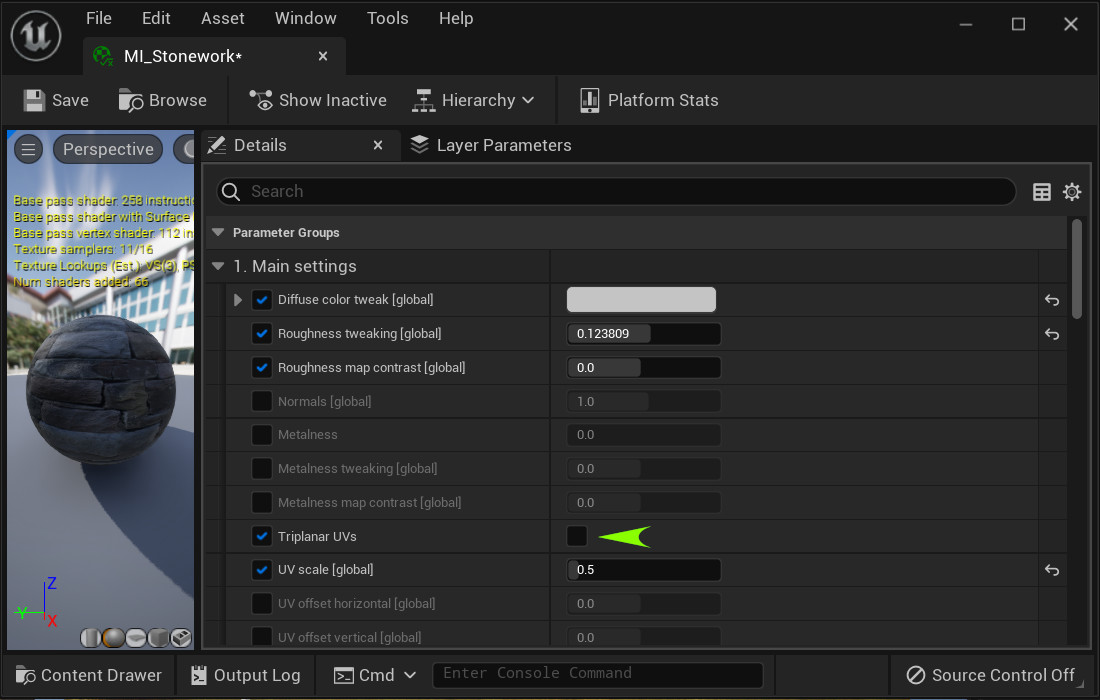
Triplanar UVs are runtime-generated UVs - simple box projection. In most cases this is not the best choise compare to native mesh UVs that usually carefully crafted to hide/minimize UV seams on mesh surface. But triplanar UVs can be very handy for modular architecture to prevent texture repetition on each piece:
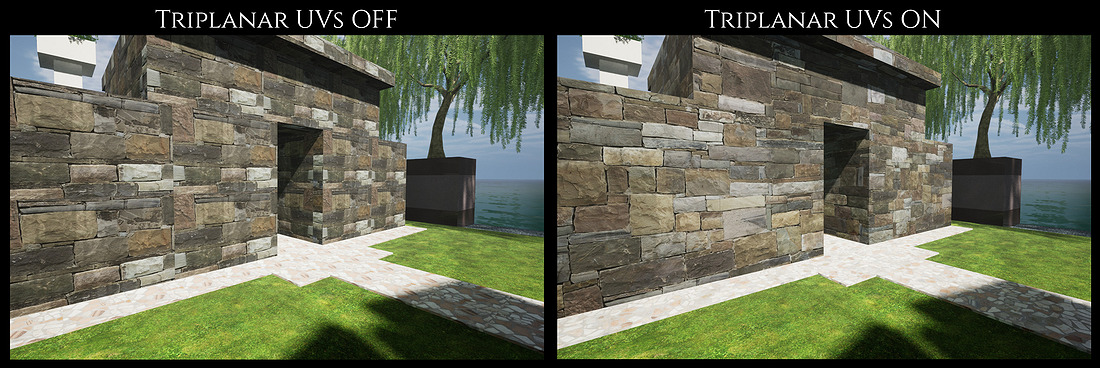
This is possible because triplanar UVs generated in world space so textures will seamlessly continue between different mesh pieces: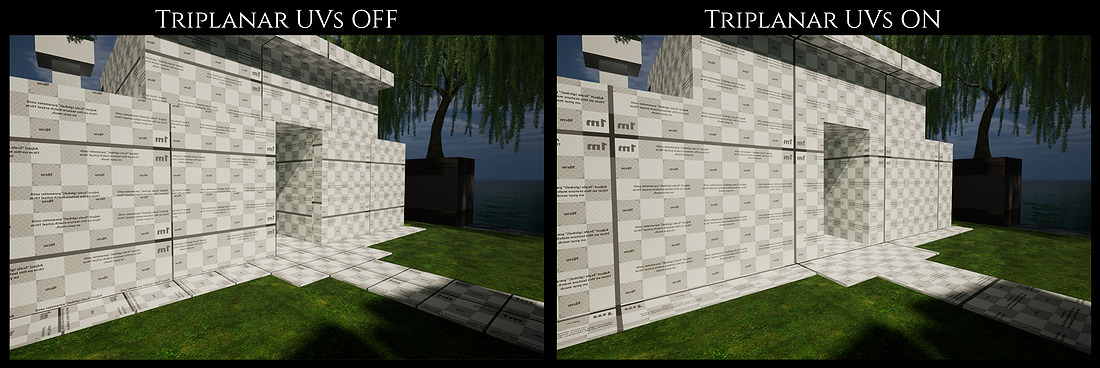
Limitations of triplanar UVs are: works well for blocky rectangular objects but on rounded shapes there will be many UV seams in very noticeable places; not appliable for moving/rotating objects because triplanar UVs are in world space so textures won't move/rotate with the object; not compatible with POM feature (Parallax occlusion mapping - it will be disabled automatically).
Q: Why some metal materials producing polygon-shaped artifacts?
- Those artifacts cames from "Edge effects" feature that is enabled by default for the majority of metal materials and producing "warn edges" effect, that gives substantial boost to that "metal look and feel":
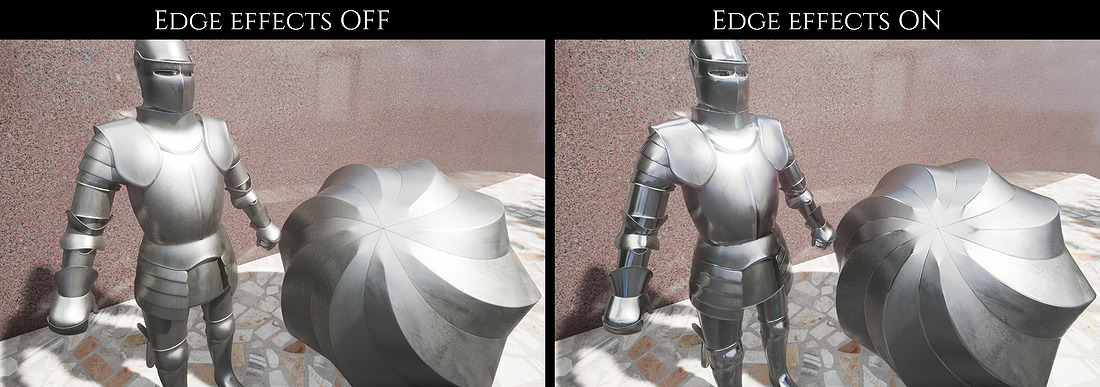
This feature didn't need any kind of cavity/pointiness map and will work on any given mesh, but this is roughly implemented - based on per polygon approach, not per pixel. Sometimes this works just fine but sometimes there are quite noticeable polygon-shaped artifacts here and there, especially on low poly objects or distant *low poly* LODs:
More than that, in Unreal Engine 5 we now have two types of meshes - usual meshes and Nanite-enabled meshes, and latter are prone to produce jagged artifacts if edge effects feature is strong enough: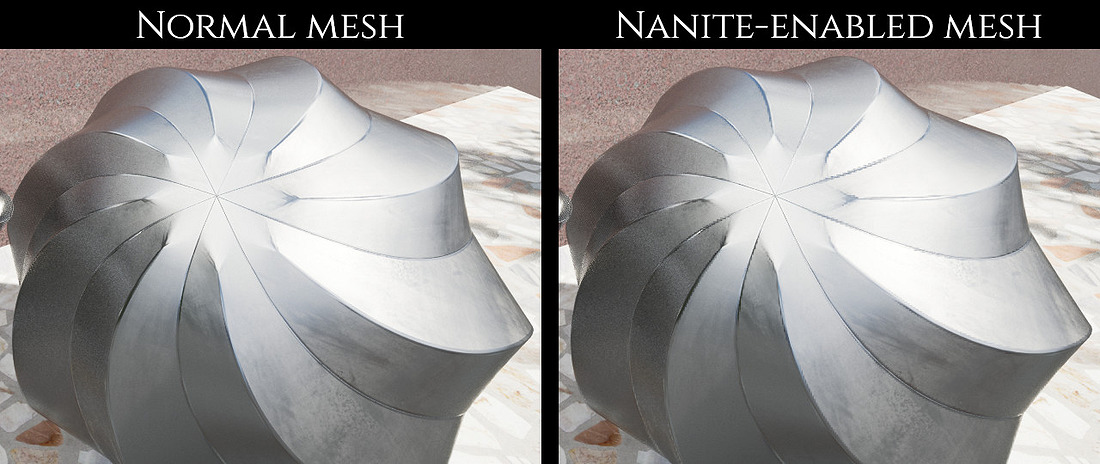
Solution is to duplicate material, apply it to the mesh and in material settings tune down edge effects or completely disable them:

Q: Why material visually changes when I'm moving closer/further?
-
This is "Repetition suppression" feature at work (enabled by default): at 5-12m distance main textures of the material will be gradually replaced by the set of distant textures that using large scale UV settings to avoid repetition, so surfaces up to 20x20m will be free from texture tiling:

This transition should be barely noticeable in most cases, but if you're feeling that change between closeup/distant textures happens way too early/too late there is an option to tweak named "Fading distance" and to completely disable this feature uncheck "Enable repetition suppression". Those settings located in section "4. Repetition suppression layer" of material properties:

Q: Why metal materials looks poor on my map?
- Metal surfaces quite demanding to work with! For best visual results they need rich & contrast environment reflections because what we see as the "surface of the metal" is mostly a colored and distorted reflection of surrounding objects. Example down below - same material on same models and only reflections from environment are different:
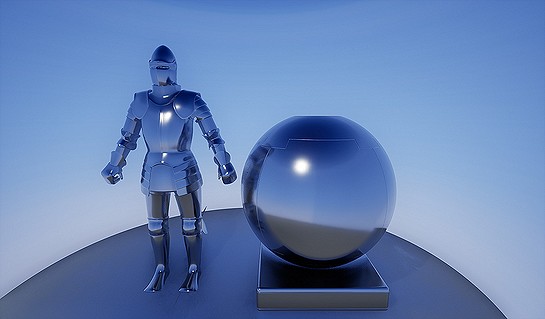
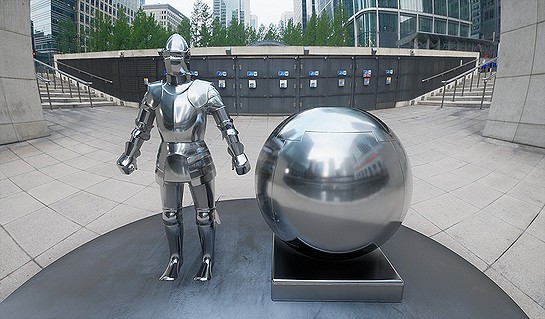
- Some grungy/aged/rusty metal surfaces will look much better if receiving strong highlight from a light source:
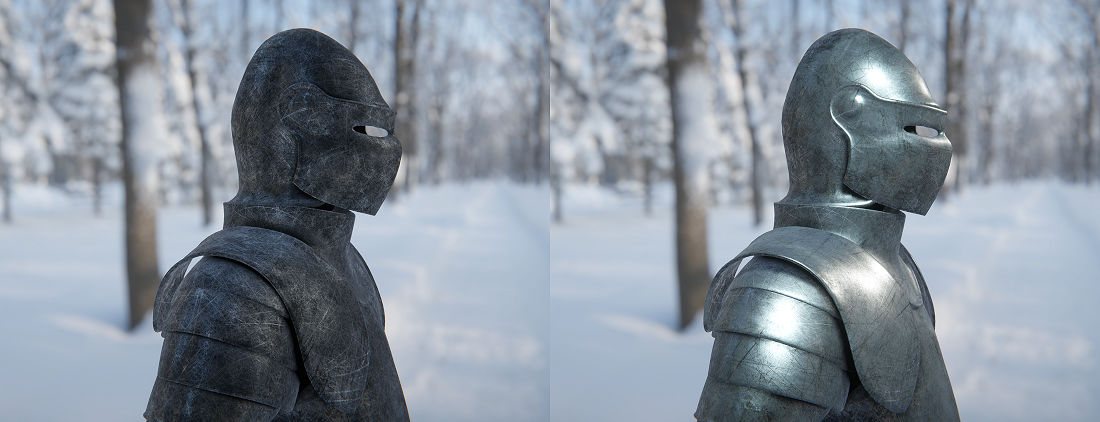
- Bare metals looks poor on large flat surfaces. Bends and other geometry details are needed to improve situation:
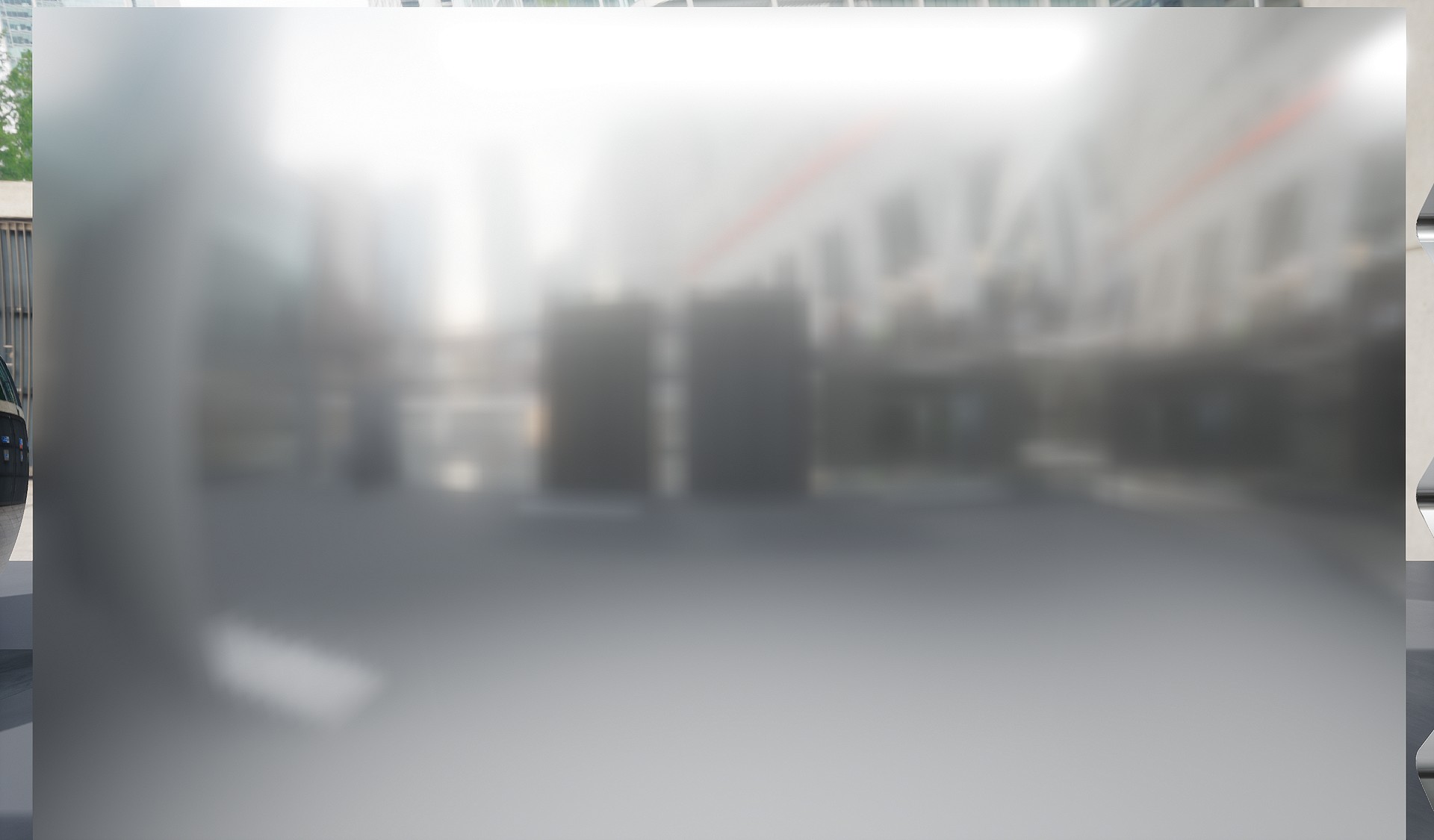
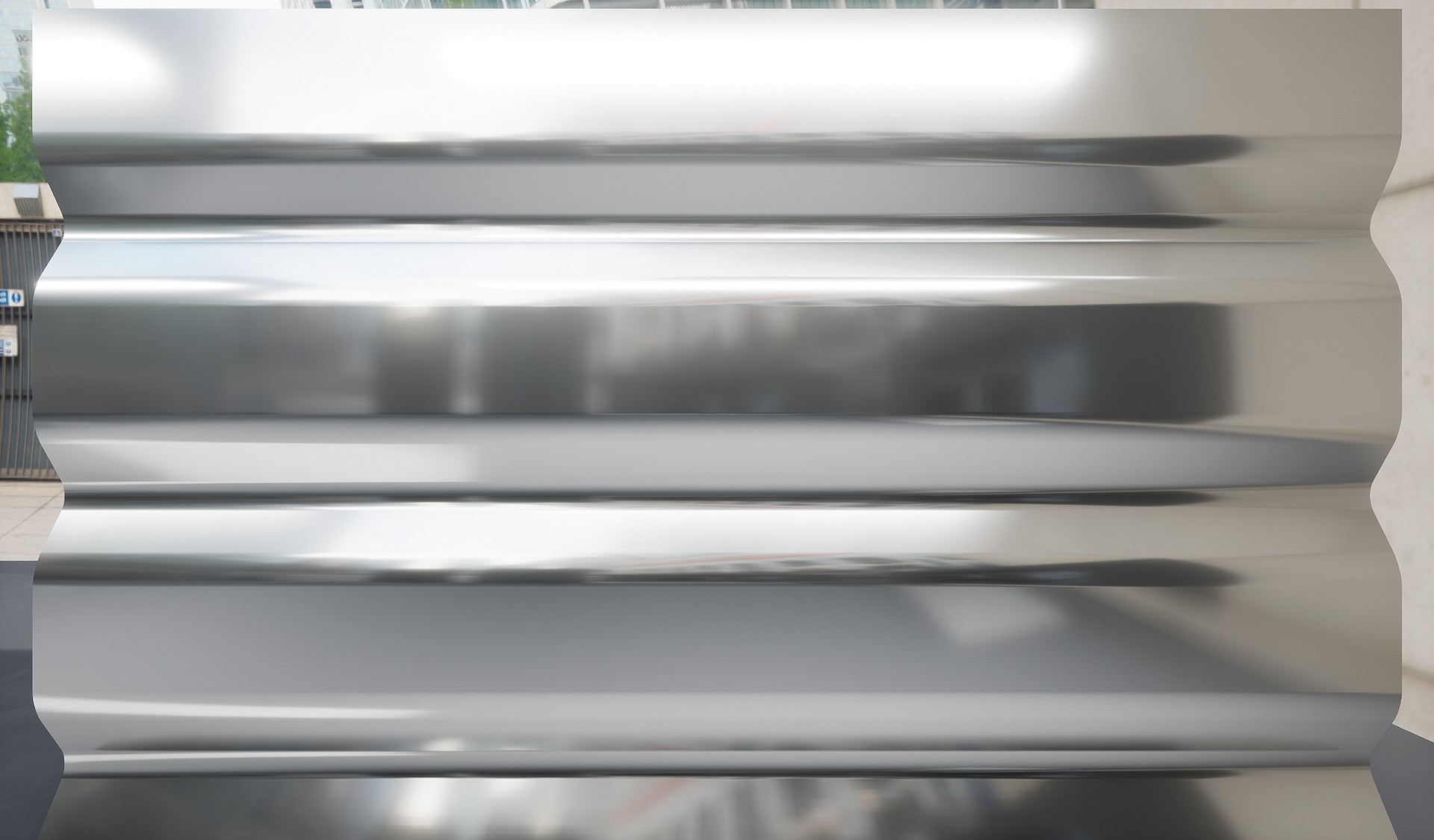
- If you're using Screen Space Reflections (SSR) don't forget to max out related settings in PostProcessVolume properties - by default they're set for performance ("Quality" is 50, "Max roughness" is 0.6) but this comes with too many visual sacrifices as you can see on the left part of the screenshot below. With "Quality" 100 and "Max roughness" 1.0 they will become more accurate like on the right part of this screenshot:
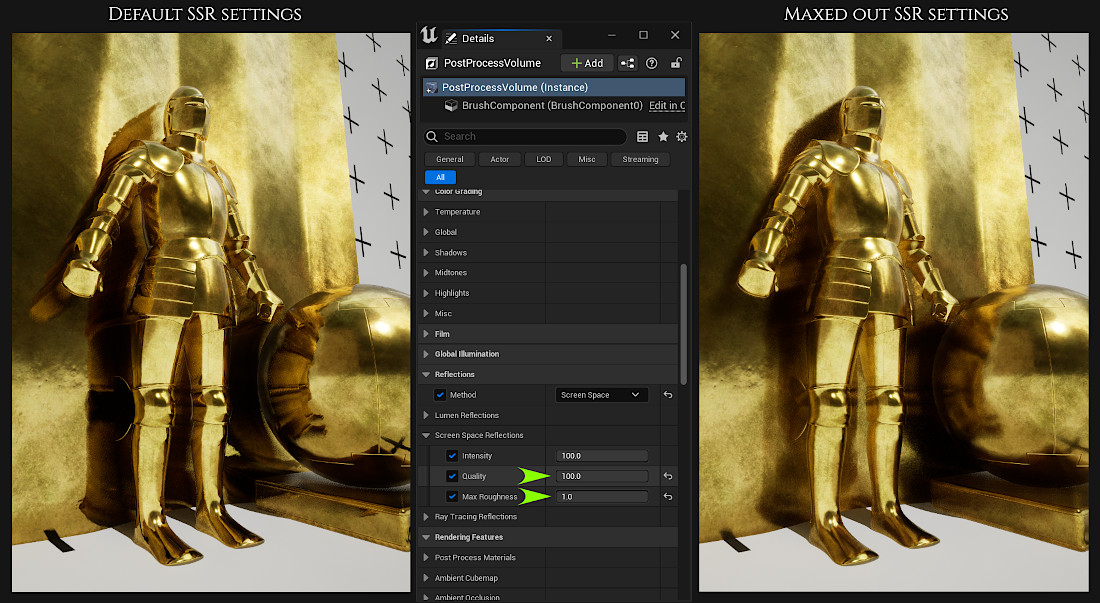
Q: How can I contact you for support?
- There is a question option for every asset on Marketplace (I will be instantly notified about it).
- Support thread on Unreal forums also available.
- If you prefer to contact me via e-mail it's on the spam-protected image at the bottom of this page.